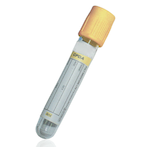
- Home
- Clinical Chemistry Tests
- Sodium
Sodium
Specimen Volume
1.0 mL blood or urine. (Paed min.vol. 40 uL blood, including K+)Sample Preparation
Centrifuge
Turnaround Time
1 daySample Processing In Laboratory
Usual
Sample Stability
4 'C
General Information
Sodium is required in the circulation to maintain fluid balance. Concentrations vary in a variety of situations. The following is a synopsis of some of the conditions to illustrate some of those.
Hypernatremia occurs in dehydration. For instance, nasogastric protein feeding with insufficient fluids may cause hypernatremia. Hypernatremia without obvious cause may relate to Cushing syndrome, central or nephrogenic diabetes insipidus with insufficient fluids, primary aldosteronism, and other diseases. Severe hypernatremia may be associated with volume contraction, lactic acidosis, azotemia, weight loss, and increased hematocrit as evidence of dehydration. The corrected serum sodium is often high in nonketotic hyperosmolar coma. The corrected serum sodium level calculated in nonketotic hyperosmolar coma: apparent mild hyponatremia with very high glucose may actually mean (corrected) hypernatremia.
Hyponatremia occurs with nephrotic syndrome, cachexia, hypoproteinemia, intravenous glucose infusion, in congestive heart failure, and other clinical entities. Serum sodium is a predictor of cardiovascular mortality in patients in severe congestive heart failure. Hyponatremia without congestive failure or dehydration may occur with hypothyroidism, the syndrome of inappropriate secretion of antidiuretic hormone (SIADH), renal failure, or renal sodium loss. The differential diagnosis of hyponatremia includes Addison disease, hypopituitarism, liver disease including cirrhosis, hypertriglyceridemia, and psychogenic polydipsia. Diuretics and other drugs may cause hyponatremia. Sodium decreasing to levels <115 mmol/L can lead to significant neurological dysfunction with cerebral edema and increased intracranial pressure.
Patient Preparation
None
Notes
Random and 24 hour urine sodiums are also valid
Note: Diuretics, Carbamazepine, Fluoxetin can decrease sodium
Grossly haemolysed samples will not be analysed.
An artifactual rise in sodium due to sample contamination (sodium citrate or Cirta-Lock™) can be identified by measuring both serum chloride and osmolality. Pseudohypernatraemia (due to hypoproteinaemia) can also be excluded by measuring sodium via a direct ISE method.
Reference Range
Serum: 133 – 146 mmol/L (Pathology Harmony)
Specifications
-
EQA Status:
NEQAS
- EQAS Scheme: Yes
Link to Further Information
https://pinboard.in/u:duty_biochemist/t:sodium/Creation Date
Monday, 08 August 2011Modification Date
Wednesday, 02 October 2019General Information
Location of Laboratories
Copyright UHB Pathology 2018
Protection of Personal Information – Clinical Laboratory Services comply with the Trust Data Protection Policy and have procedures in place to allow the Directorate and it’s employees to comply with the Data Protection Act 1998 and associated best practice and guidance.
University Hospitals Birmingham medical laboratories at Queen Elizabeth Hospital, Heartlands Hospital, Good Hope Hospital and Solihull Hospital are UKAS (United Kingdom Accreditation Service) accredited to the ISO 15189:2012 standard. For a list of accredited tests and other information please visit the UKAS website using the following link: https://www.ukas.com/find-an-organisation/
- Molecular Pathology is a UKAS accredited medical laboratory No. 8759
- Biochemistry is a UKAS accredited medical laboratory No. 8910
- Haematology and Transfusion is a UKAS accredited medical laboratory No. 8784
- Clinical Microbiology is a UKAS accredited medical laboratory No. 8760
- Cellular Pathology is a UKAS accredited medical laboratory No. 10141
- Musculoskeletal laboratory is a UKAS accredited medical laboratory No. 9897
- Heartlands, Good Hope and Solihull Hospital pathology laboratories are a UKAS accredited medical laboratory No.8217.
Tests not appearing on the UKAS Schedule of Accreditation currently remain outside of our scope of accreditation. However, these tests have been validated to the same high standard as accredited tests and are performed by the same trained and competent staff.
For further test information, please visit the test database: http://qehbpathology.uk/test-database
For further information contact Louise Fallon, Quality Manager, 0121 371 5962
 Biochemistry
Biochemistry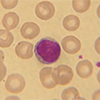 Haematology and Transfusion
Haematology and Transfusion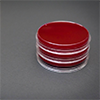 Clinical Microbiology (Including Virology)
Clinical Microbiology (Including Virology)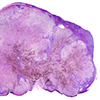 Cellular Pathology
Cellular Pathology General Information
General Information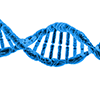 Molecular Pathology
Molecular Pathology